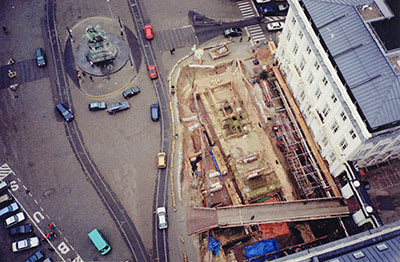History & Archaeology
Coudenberg Palace was undoubtedly one of the most beautiful princely residences in modern Europe. From the Coudenberg hill, it dominated the city of Brussels.

From the 12th to the 18th century, the successive rulers of the Duchy of Brabant transformed a small castle into a sumptuous residential palace. It gradually acquired a central role in the politics of the Low Countries and became a centre of diplomacy and a place of pleasure. It passed into the hands of the Dukes of Burgundy in the 15th century, and became the main residence of Emperor Charles V in the 16th century and of Archdukes Albert and Isabella in the 17th century. In 1731, a major fire destroyed most of the palace. Left in ruins for 40 years, the "Burnt Court" was finally destroyed in the 1770s to make way for the present-day Place Royale.
More on the history of the palace

Following the construction of the Royal Quarter, Coudenberg Palace disappeared from the urban landscape. But its memory never completely fades. Local historians mention it throughout the 19th century and identify a few buildings that survived the destruction. In the second half of the 20th century, archaeologists excavated important remains in order to make them accessible to the general public at the beginning of the 21st century.